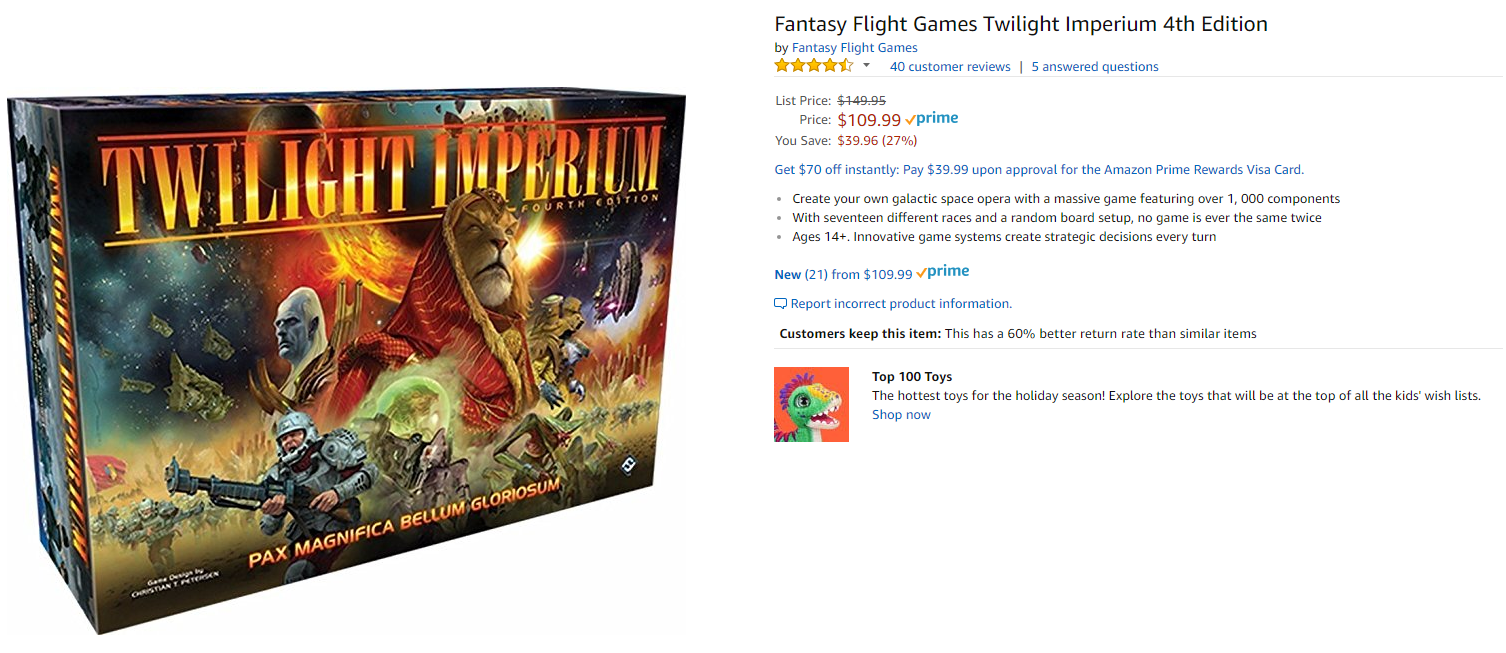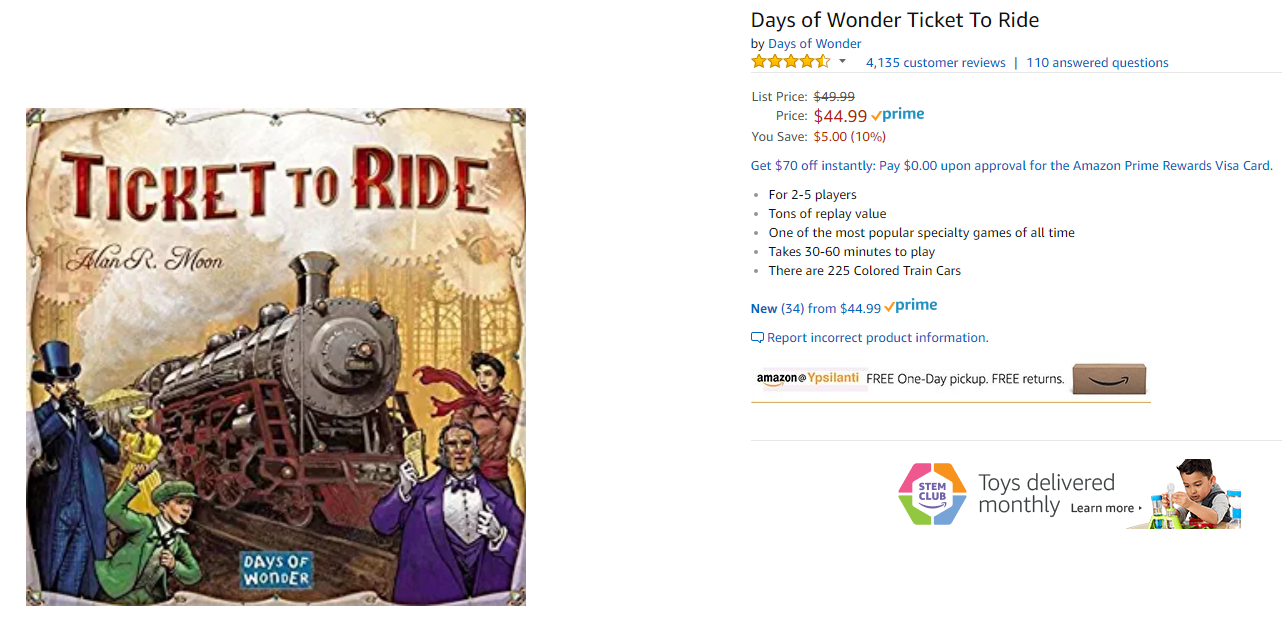Cardboard costs a lot of money! Board gamers are accustomed to handing over hundreds of dollars at a time on board game shopping sprees. If you look on /r/boardgames or Board Game Geek, you can find no shortage of “shelfies” where people have hundreds of board games. You might even get the impression that board gamers are not price-sensitive at all…

Need help on your board game?
Looking for more resources to help you on your board game design journey?
Price matters. The amount you choose to charge for your board game says a lot about your game. Naturally, as the price goes up, fewer people will be interested in purchasing. But how does that explain $150 monsters like Gloomhaven?
Price isn’t just a number
Before you set out to apply a price to your board game, ask yourself these questions:
- How complex is my game?
- What components does it come with?
- How long does it take to play?
- How physically large is the box?
Price isn’t merely the amount of money that someone has to pay to get a copy of your work. It’s one of the most useful pieces of information about your game available to a board gamer. It is shorthand for the above questions. Along with your box, the theme and mechanics of your game, and the reviews you receive, board gamers will make a decision to buy or not to buy.
Different price points have different psychological effects on people. A $19 game is an impulse buy – people usually don’t think too much about spending that amount of money. For that price, they expect a small game without a whole lot of parts. On the flip-side, people are perfectly okay shelling out $100 or more for a giant game like Gloomhaven or Food Chain Magnate. Those games come with lots of parts and are complex, long-lasting games. There’s a lot going on there!
If you’re not sure on price, start here…
When choosing a price for your game, you’ll need to do something I often advise: look at similar games on Kickstarter and Amazon. Make sure you take into account the complexity of your game, the components included, the length, and its physical size. I even recommend you go to a local gaming store to look at the boxes, still shrink wrapped, and compare them to their prices. That can tell you a lot about how board gamers value games.
Naturally, any price you come up with will need to cover your manufacturing costs. A general rule of thumb to follow is “five times your landed cost.” That is to say, your game should cost gamers five times as much as it costs to print and ship the game to your warehouse. For Kickstarter campaigns, you might be able to push this down to “four times your landed cost.” As always, though, run the numbers and don’t rely on rules of thumb without closer analysis.
Still, I must reiterate: don’t merely think of price in terms of monetary exchange. It’s an important part of signaling the kind of game you have created and how much is in the box. The value of a game is not just its parts, its art, or the amount of hours you can play it before getting bored. The value is in the eye of board gamers and their expectations.
Here are a few examples:
Santorini – $25.98 on Amazon

Santorini is a sharp game. It’s a very intelligent abstract strategy game in which you competitively build towers in an effort to be the first person to stand atop one. It’s a really simple concept that has all sorts of profound strategic implications. From its simplicity comes its complexity.
It has great plastic components – these neat towers that stack and give the game a great physicality. For goodness sake, the box is linen! Yet here stands for a mere $25.98 despite having really good components. What gives? Are they trying to be competitive with pricing? Is the manufacturing cost deceptively low?
I don’t know the answer for sure, but my belief is that they keep this game under $30 to attract the right audience. It’s considered a light game, and while it can accommodate 3 or 4 players, it’s really best for 2. The game doesn’t have the sheer grittiness or complexity that more hardcore gamers crave, but it has a light, poppy appeal that makes it a great gateway game. That’s why they price it under $30 – to keep it in gateway game territory.
Twilight Imperium – $109.99 on Amazon

Twilight Imperium is notoriously complex. It’s for 3-6 players and games routinely exceed 4 hours in length. The sheer amount of components can easily fill a large table. I lifted the box once in a gaming store, and I can swear its heavier than the stones I used to build the retaining wall outside my house. This game is a monster!
This game is huge – game length, player count, component count, and box size. The price tag merely reflects what the game is. Now, yes, Fantasy Flight does have to charge a lot of money to break even on all those parts. That’s true. This game, however, scratches a very specific itch for board gamers who love heavy games. That’s why they’re willing to drop a fat hundred bucks on it. Buyers perceive a great value in the game which justifies the three-digit price tag.
Ticket to Ride – $44.99 on Amazon

Ticket to Ride is an old classic. If you’re reading this blog, you’ve probably played it. It’s a great game. It’s what many gamers would describe as a “medium-sized game.” Appropriately, it is priced at a middle of the road price: $44.99. Anything $40-50 generally implies that a game takes about an hour to play, can entertain 2-4 people, and doesn’t skimp on components. All of these things are true for Ticket to Ride, and the price justifies this.
Pricing board games is about far more than simply breaking even on manufacturing costs. It’s yet another way to signal values to prospective customers. Board gamers are accustomed to looking at games, and have internalized an intuition about what to expect out of games priced in a certain way.
Have you ever bought a game because of the price tag? Have you ever walked away from a game because of the price tag? Share your thoughts, experiences, and questions below!





12 thoughts on “How to Price Your Board Game”
Speaking of impulse buys, $12 bucks for a Settlers of Catan dice game I didn’t know existed? In the cart it goes!
When I price our games from Lumaca Games I take in account the fact that they are print and play!
We launched Cage Match at $19.99 because it came in a 7.5″ x 5.5″ box, and boxes that size typically retail at $19.99. However, ours is thicker and heavier than the typical 7.5″ x 5.5″ box game, so based on some feedback I got, we raised the price t o$24.99. Will let you know how it goes.
I sourced my game pricing from panda games because I thought they would do a really good job on manufacturing. Fortunately even though I only marked the game $10 a box and ran a minimum number of games my pricing ended up being far too high for the market on kick starter. I had a lot of plastic components dice and cards and an oddly shaped custom cut game board which added to the cost. Any suggestions on where I might get a quote to lower the cost but keep the quality high?
Hi Brandon,
Thanks for the article!
I was wondering. When speaking about “five times your landed cost.”
Do you consider that the cost for the art & graphic designs is a part of that landed cost or not?
Thanks again! 🙂
Hi Axel! Generally, you can exclude art and graphic design. The “five times landed cost” rule is used primarily to make sure variables costs are low enough to where you make decent money per each sale. Art, graphic design, review copies, prototypes…all that can be thought of as fixed costs incurred before you start printing and selling the game.
Thanks Brandon! 🙂
Although your post was backing January and I have been reading them, I have been very busy with getting my game ready for kickstarter. Now I have finally got a chance to respond. When I go to my FLGS I look at games that may be similar to the one I am designing and their cost. I look at box sizes, components and if they have minis and how that affects the cost of the game. I have bought many different styles of games, although my niche is mini and combat related games. Overall, if the art and design are good, the gane has nice components and it is affordable for what it offers then I will buy it immediately. Otherwise I may research the popularity of the game and how it plays before buying into it.
All that being said, I have also gone through about five manufacfuers for quotes to determine a decent price range for my game. I know what price range I want but it may change depending on how well the kickstarter succeeds.
I have a Parker bros…game called Masterpiece (the Art auction game) I want to move it along.
Hi Brandon,
Thanks for the article! Setting the right price requires a careful balance between covering the costs, ensuring profitability, and making the game attractive to potential buyers.